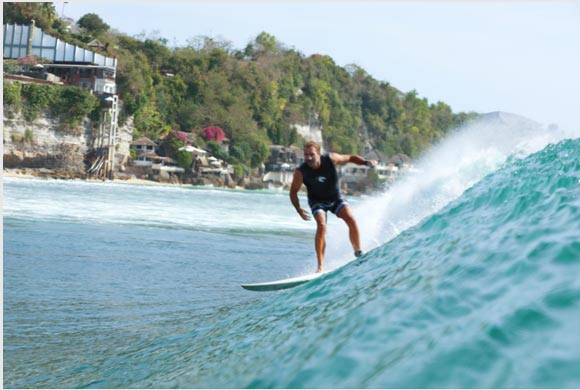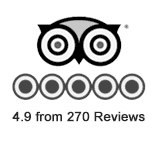COMMON MISTAKES SURFERS MAKE

7 Common Mistakes Surfers Make & How to Fix Them
We all know that surfing is difficult. Everything about learning to surf, from paddling out to catching a wave, presents us with new and seemingly insurmountable challenges. But something about the feeling we experience when we caught our first wave profoundly resonated with us. It hooked us and transformed us from seemingly normal people into addicts. Plain and simple. There’s no turning back. No matter how many wipeouts, hold downs, or frustrating experiences we have in the water, we will persist. Thankfully, there are a few steps we can take, as beginner surfers, to remedy some of our downfalls. Dive in and learn the common mistakes surfers make while learning, and the steps you can take to fix them.
Common surf mistakes
1. Poor positioning on the board
While paddling for a wave, it’s vital to consider your position on your board. Too far back, and you’ll never catch a wave. Each oncoming roller will simply sweep under you. Too far forward, and you’ll submerge the nose of the board and nosedive in the process. Your paddle position on the board should leave the board completely flat on the water while you paddle. Neither the nose nor the tail should rise from the water as you paddle. Once you find the sweet spot on your board, look for a reference point so that you may remember the position. My go-to is my relative position to the logo on the board.
2. Dropping to a knee during the pop-up
Now that you’re paddling effectively and catching waves, it’s time to worry about your pop-up. Pop-ups are key to securing a clean ride down the line of a wave. If your pop up is too slow, the wave will outrun you. If your pop us is off-balance, you’re sure to fall. One way many beginner surfers cope with the difficulty of the pop-up is to drop to a knee to retain their balance as they get to their feet.
This is incorrect and will lead to the formation of bad habits, which can plague your surfing and halt your progression. If you’re not agile enough to hop into your stance during your pop-up in one swift movement, do not fret. Simply place one foot after the other. As the wave begins to lift you, begin your pop up by arching your back upwards, lifting your torso off the board as you place your hands flat onto the board. Next, place your back foot flat on the board and bring your front foot up between your hands, and stand up into your stance.
3. Grabbing the surfboard rails during the pop-up
Another egregious pop-up error, that is often made by learning surfers, is to grab the rails of the board during the pop-up. Grabbing the rails may seem like a natural thing to do when the force of the wave begins to lift you, but it will undoubtedly cause you to fall. While it may be a hard habit to break, it has a simple fix. Rather than grabbing your rails during the pop-up, place them securely under your chest, flat on the board, and push up into position.
4. The “poo stance”
The dreaded poo stance is the telltale mark of a kook, and it is something that should be avoided at all cost. In addition to forcing you to out yourself as a true kook, the poop stance will hinder your ability to cleanly ride down the line and retain your balance.
By definition, the poo stance is an exaggerated squat stance where the surfer is bending at the waist, not the knees, while also pushing their backside out. The remedy to the god-forsaken poo stance is to practice the correct stance repeatedly on land before trying it in the water. A correct surf stance will have the surfer’s feet just wider than shoulder-width, the torso turned facing down the line, and the knees slightly bent with the back knee turned slightly inward.
5. Standing too far forward/ back on the board
If you’ve conquered the pop-up, but can’t seem to successfully ride a wave, your positioning on your board may be to blame. If you stand too far to the front of your board, you will sink the nose, which will cause you to wipe out. If you’re too far back, the wave will roll under you and you will not be able to complete the ride. The simple solution is to pop up in the middle of your board, with sufficient weight on your front foot, allowing you to drop into the face of the wave. As you ride down the line, you may need to change your position on the board. Maneuver forward to speed up and ride further down the line, maneuver backward to avoid nose-diving, or to slow down and reenter the pocket of the wave.
6. Not facing down the line while riding backside
If you’ve mastered the pop-up, paddling, and catching waves on your own, then it is time to work on riding open faced waves. Catching your first wave is a surreal rush that is hard to match but riding your first green wave takes it to a whole new level. Taking off on a perfect peeling wave, carving up and down its open face while outrunning the white water behind you, is akin to what I imagine flying feels like. Many surfers, however, struggle with riding open-faced waves on their backside. The obvious reason for this is that when you are riding backside, you are not facing the wave, and therefore it is harder to surf as effectively.
Fortunately, there is a sure-fire method to help surfers turn and face, and subsequently ride, down the line on their backside. This method is commonly referred to as “Waiter’s Hands.” “Waiter’s Hands” is a position in which a surfer holds both hands directly in front of their torso as if they were carrying a tray of plates.
Holding your hands in this position and turning at the hips to face down the line, will allow you to avoid cutting your ride short and effectively make it down the line.
7. Downsizing your board to quickly
In surfing, like everything else in life, it’s important to crawl before you walk, walk before you run, and so on. Many surfers feel that once they’re up and riding on a foam board or a longboard that they are ready to hop on a shortboard. In reality, that is rarely the case. If you downsize your board too quickly, you’ll find executing the skills you’ve previously grasped to beß difficult and frustrating. Surfers should spend ample time on a longboard before they consider riding anything else.
Longboards teach surfers the feel of the wave, how to use the wave to generate speed, and help them gain confidence in the water. If, after a few weeks of comfortably and confidently surfing a longboard, you feel it is time to change it up, pick up a fun-size board. Perhaps a 7-footer.
Spend as much time mastering that board, as you did the longboard, and move down from there. Repeat with each size, until you arrive at a high-performance shortboard.
More information on choosing the right beginner surfboard is on this article: best beginner surfboards to buy
We hope you like the article about common surf mistakes and how to fix them
Interested in learning how to surf? Have a look at the surf vacation packages we offer for our guests at Swell Surf camp
MORE SURFBOARD INFO
Different surfboard shapes explained
Questions or comments about this surf technique article? Let us know, send us a message.
-
WHERE IS SWELL LOCATED?
Swell Surf camp is located on the North coast of the Dominican Republic, right in the center of the cool surfer town of Cabarete. With 3 international airports to choose from it's also one of the easiest places to get to for a quick surf getaway. Puerto Plata Airport is only 25 minutes away from Swell. On the' getting here' page you'll find the different options of getting to us.
-
ABOUT SWELL SURF CAMP
Founded in the winter of 2009, Swell Surf Camp emerged from Jeroen and Clare Mutsaars vision. They lived in the Dominican Republic for eight years and spotted a gap in the surf camp market for higher quality accommodations combined with an engaging social atmosphere. Their extensive travel and stay experiences across different countries like Costa Rica, Nicaragua, Peru, Hawaii, Indonesia and various European nations fueled their passion to elevate the surfing retreat experience.
Swell Surf Camp is renowned as the world’s first luxury surf camp tailored specifically for beginners. The founders collaborated with a notable Swiss architect to design facilities that blend comfort with style. This innovative approach ensures every guest enjoys superior lodging and amenities. Since its inception, Swell has taught over 9,000 people how to surf with an emphasis on safety, fun, and structure.
Our achievements speak volumes. Swell has collected numerous accolades and maintains hundreds of stellar reviews from guests globally. Recognized repeatedly as the leading destination for luxury surf vacations, our commitment to excellence keeps us at the forefront of the industry.
Beyond surfing, Swell offers a diverse range of activities including kitesurfing, wingfoiling, and yoga classes. Guests can also enjoy horse riding both on scenic beaches and mountain trails—plus exciting adventure-filled excursions like canyoning.
A crucial element of any vacation is food, and here at Swell we excel. We provide delicious home-cooked meals daily. For evenings out, guests find themselves just minutes away from an array of dining options that promise satisfying culinary adventures.
For those who prioritize upscale amenities and wellness in a unique setting built around learning surf skills amid profound natural beauty, Swell should be on the top of your surf destination list
-
WHAT TO EXPECT FROM A 1 WEEK LEARN TO SURF HOLIDAY
Dreaming of catching your first wave but wondering if surf lessons are really for you? At Swell Surf Camp, our lessons are designed specifically for beginners, and we mean absolute beginners, particularly those between 40 and 55 from cities like New York, Boston, or Toronto. You’ll never feel rushed, lost, or out of place. Our expert instructors genuinely love teaching, and their approach is as much about encouragement as it is about skill-building. Every instructor carefully tunes each lesson to fit one person, you, so you always get personalized support, whether you’re working on basic paddling, learning to pop up, or building confidence in the water.
The journey at Swell Surf Camp is about progression, not perfection. You’ll start with the very basics, practicing on the sand before moving into gentle ocean waves with your instructor right beside you. Throughout every lesson, our focus is on clear communication, safety, and keeping things fun. As you progress, our instructors give you feedback in real-time, helping you celebrate small wins and guiding your next steps. You’ll learn solid surfing foundations, water safety, and even the unwritten rules of surf culture. By the end of your stay, you’ll be amazed at your own growth and how natural surfing feels. Don’t wait to discover how transformative a single lesson can be, book your surf adventure at Swell Surf Camp and let your surfing journey begin!
-
WHAT SPORTS DOES SWELL OFFER?
It's not only surfing that's on offer at Swell, we also offer learn to wingfoil and learn to kitesurf packages.





